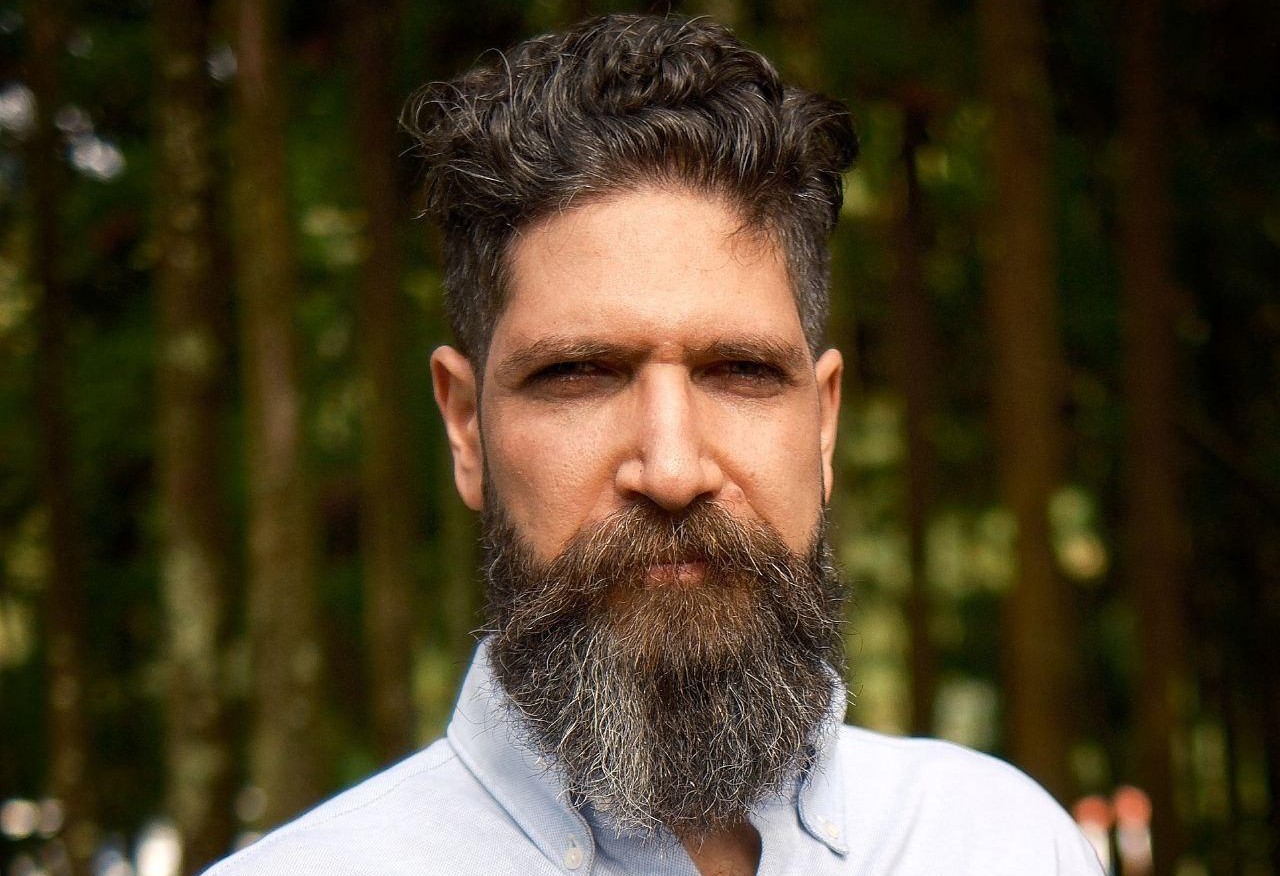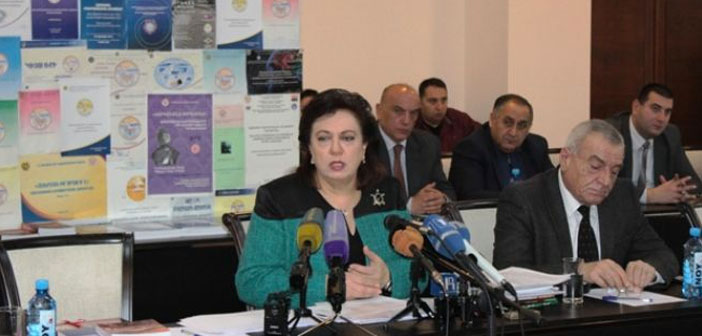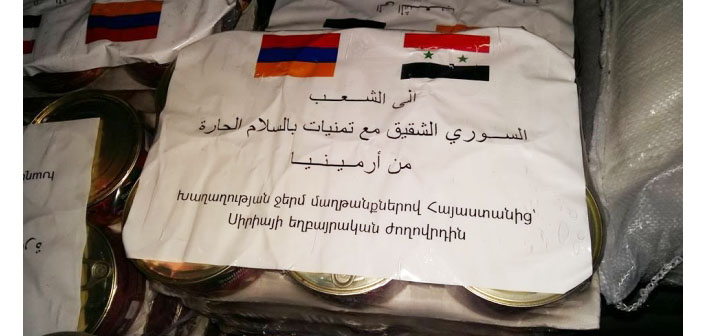Syrian Armenian journalist Kevork Almassian: "In Kessab, a town historically home to a vibrant Armenian population, the community has largely fled, fearing a fate similar to that of Alawites in neighbouring areas."
AKANDA TAŞTEKİN
As Hayat Tahrir al-Sham (HTS) takes control in Damascus and aims to establish its regime, concerns for the safety of minority groups are rising. While Alawite communities continue to face massacres, Christians, who are somewhat less targeted, still live in fear. On March 9, during HTS operations in Latakia, a father and son from the Armenian community were killed.
The Armenians garnered attention in 2014 when Turkish-backed jihadist groups attacked the town of Kessab. Many Armenians fled, while a few elderly residents who were unable to escape were taken to Turkey in what was presented as a 'humanitarian aid' operation but was exploited for public relations purposes.
Today, Armenians, like other minorities, are anxiously hoping to emerge from their dire situation, uncertain of what the future holds for them.
Who is Kevork Almassian?
Syrian Armenian journalist Kevork Almassian states that most Armenians targeted by armed opposition groups after 2011 fled the country due to worsening conditions. He notes that following the collapse of the regime, Armenians were less frequently targeted by HTS compared to Alawites. In Kessab, Armenians have sought refuge in Latakia, but recent events have made them too afraid to leave their homes. The Armenian community is maintaining a neutral stance toward HTS to avoid suffering the same fate as the Alawites. Almassian warns of the potential for the Balkanization of Syria at the hands of HTS.
Kevork Almassian was born in 1987 in the Sheikh Taha neighborhood of Aleppo, a modest area known for its tight-knit communities. He grew up in an Armenian family that struggled financially, living below the middle-class line.
Almassian recounts that his father, a small businessman, created a relaxed and comfortable life for their family despite financial constraints. His early years were strongly connected to the Armenian community. He attended Armenian kindergarten, elementary, and secondary schools, and spent much of his free time playing football at the Armenian Homentmen club.
He studied International Relations and Diplomacy at the University of Kalamoon in Rif Damascus and later pursued studies in European Affairs and Middle Eastern Politics in France and Lebanon. In 2010, he moved to Lebanon for further education while keeping a strong connection to Aleppo by visiting his family every week.
The outbreak of the Syrian conflict in 2011 drastically changed their lives. In mid-2012, his brother was kidnapped by the Tawhid Brigade, a militant group, and the family was forced to pay a $12,000 ransom for his release. This traumatic event led his parents to flee Syria later that same year.
They initially sought refuge in Beirut before relocating to Armenia, where they stayed until 2020. That year, they returned to Aleppo but left again in December 2024 following the fall of the Assad regime.
Almassian runs a Youtube channel where he produces daily videos and live streams that analyze global geopolitical issues from a critical perspective, with a particular focus on Syria. He aims to provide nuanced insights into the region's complex dynamics, drawing on his personal experiences and academic background.
Almassian discussed the current situation of Armenians in Syria following HTS's rise to power for Agos.
“We hear of kidnappings and executions on highways”
In addition to the many Alawites, it is reported that two Armenians—a father and son—lost their lives in Latakia during operations carried out by HTS in Syria. Although the operations have been declared over, the aftermath reveals a horrific scene.
What is the current situation for Armenians in Syria? What experiences have they faced, and what stories do they share? Have you heard any stories from Armenians or other minority groups?
Since the outbreak of the war in 2011, the majority of Syrian Armenians have fled the country, driven by the devastating economic conditions and widespread violence. Local sources in Aleppo report that the Armenian population has declined by over 80%. To put this into perspective, my extended family, which once numbered around 50 people in Syria, has now dwindled to zero. Many have resettled in Armenia, Canada, and Germany. Today, most of the remaining Armenian community is concentrated in Aleppo, which has been relatively spared from sectarian violence. Compared to other groups, such as the Alawites, the Armenian community has faced less direct targeting by the Julani regime, though the overall impact of the conflict has been severe.
How many Armenians are currently living in the town of Kessab in Syria?
In Kessab, a town historically home to a vibrant Armenian population, the community has largely fled, fearing a fate similar to that of Alawites in neighbouring areas. Armenian residents in Latakia, meanwhile, have been confined to their homes for days at a time due to safety concerns.
Then there are Armenians among those who fled their homes for fear of their lives... Where did they escape to? Do you think they will be able to return to their homes?
Many who fled Kessab sought refuge in Latakia, as the roads to Aleppo and Damascus remain perilous, with reports of kidnappings and executions along the highways. While some hope to return home if security improves, many Armenians have lost trust in the Julani regime and remain skeptical of any assurances of safety.
“Pro-Julani Syrians began to refer Armenians as ‘refugees”
In an Al Jazeera interview in 2014, Abu Mohammed al-Julani tells that Syria should be ruled under his group’s interpretation of “Islamic law” and the country’s minorities, such as Christians and Alawis would not be accommodated.
What has been the government's approach to Armenians since Julani's interim presidency? Where do Armenians fit within Syria's ethno-religious landscape, and how endangered are they?
Critics argue that despite changes in his appearance, Julani, the leader of HTS, remains deeply rooted in Takfiri ideology. His rhetoric and actions, including the ongoing sectarian violence in coastal cities, reflect this. In a previous interview in 2014, Julani declared that Alawites are not considered Muslims and should convert. His militias, influenced by Ibn Taymiyya’s interpretations, prioritize targeting Alawites and Shiites over Christians and Jews. This ideology has fueled widespread fear among minority communities, including Armenians.
Historically, Armenians in Syria enjoyed friendly relationships with other communities, including Kurds, Alawites, Druze, and Sunnis. After the 1915 Genocide, Armenians brought with them a wealth of professions, culture, and social values, earning a reputation for honesty, integrity, and professionalism. However, since 2011, sectarian and ethnic tensions have escalated, exacerbated by radical forces linked to the Muslim Brotherhood and Salafi Takfiri groups. Recently, some pro-Julani Syrians have begun referring to Armenians as “refugees” and calling for their deportation to Armenia, marking a troubling shift in attitudes.
What are the relations between Armenians in Syria and other minorities, such as Kurds, Alawites, and Druzes? How do they relate to other Christian groups like the Assyrians?
The Armenian community maintained a positive relationship with both Hafez and Bashar al-Assad. While they did not receive special privileges, their needs were addressed through direct channels with the regime. Bashar al-Assad often cited Armenians as a model of a patriotic community that integrated into Syrian society while preserving its language and culture. Under Assad, Armenians were tacitly guaranteed representation in the People’s Assembly, ensuring their voice in government. However, their political freedoms were limited by the authoritarian nature of the Baath Party.
In contrast, the rise of HTS has created a vastly different environment. Julani’s ties to al-Qaeda and his reliance on Turkish intelligence have led many Armenians to view him as a Turkish asset. With limited political influence, Armenian churches and patriarchies have prioritized maintaining a neutral stance toward HTS to avoid the fate of other targeted groups, such as the Alawites.
What were the living conditions for Armenians in Syria before the Assad era compared to today? How did Armenians and Christians relate to the government during that time? Is the situation for them better or worse now? Do you think they can live alongside HTS? What do you think about the SDF-HTS agreement?
If Julani continues on his current path, the future for Syria’s minorities appears grim. Many communities may seek foreign protection, potentially leading to the balkanization of Syria. For Armenians, the lack of international support from the global diaspora has further compounded their challenges. While some individuals may receive aid, there is no organized effort by international Armenian organizations to support those remaining in Syria.
As the conflict drags on, the Armenian community, like other minorities, faces an uncertain future, with many questioning whether they will ever be able to rebuild their lives in a fractured Syria.





